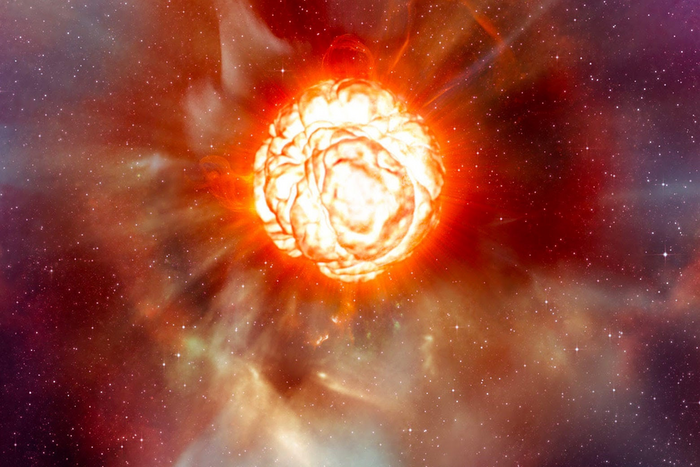
Scientists can now observe supernova explosions
A team of astrophysicists from the Liverpool John Moores University (LJMU) in the UK and the University of Montpellier in France has devised an “early warning” system to sound the alert when a massive star – typically between eight and 20 solar masses – is about to end its “life” in a supernova explosion.
According to the experts, in the last phase of their lives – the so-called “red supergiant” phase, occurring a few months before their explosion – massive stars will suddenly become about a hundred times fainter in visible light. This significant dimming is caused by a sudden accumulation of materials around the stars, obscuring their light.
Until recently, scientists were not sure how long it took for the stars to accrete these materials. Now, for the first time, the researchers managed to simulate how red supergiants might look like when they are embedded in such pre-explosion “cocoons.”
Since old telescope archives show images of stars that exploded about a year after the images were taken, and the stars appeared normal – meaning that they cannot yet have built up the circumstellar cocoon – the cocoon must be assembled in less than a year, which is considered to be extremely fast.
“The dense material almost completely obscures the star, making it 100 times fainter in the visible part of the spectrum. This means that, the day before the star explodes, you likely wouldn’t be able to see it was there,” said study lead author Benjamin Davis, an associate professor of Astrophysics at LJMU.
“Until now, we’ve only been able to get detailed observations of supernovae hours after they’ve already happened. With this early-warning system we can get ready to observe them real-time, to point the world’s best telescopes at the precursor stars, and watch them getting literally ripped apart in front of our eyes,” he concluded.
The study is published in the Monthly Notices of the Royal Astronomical Society.
Image Credit: European Southern Observatory/L. Calçada
Check us out on EarthSnap, a free app brought to you by Eric Ralls and Earth.com.
—
By Andrei Ionescu, Earth.com Staff Writer












